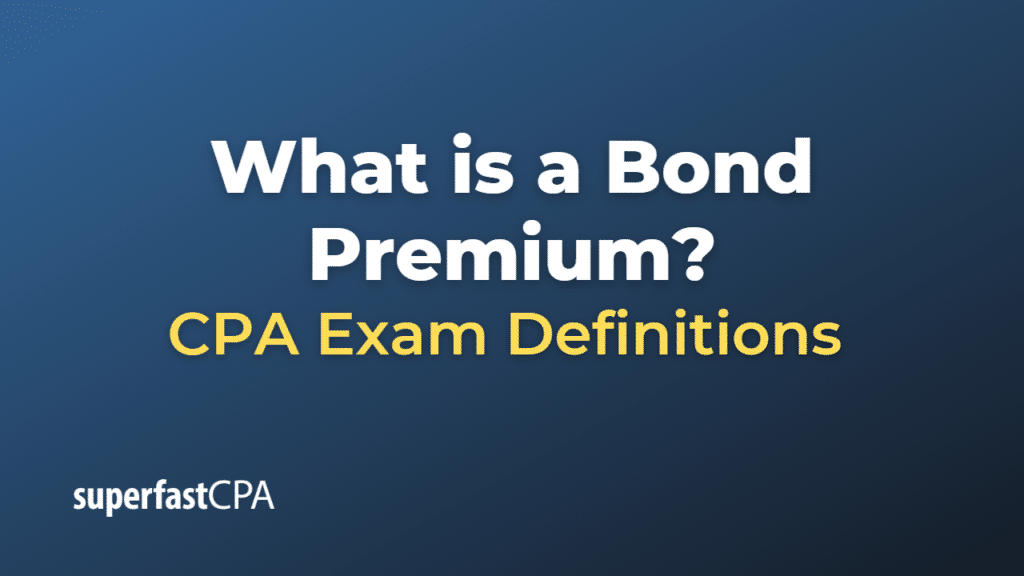Bond Premium
A bond premium refers to the difference between a bond’s market price and its face (par) value when the bond is trading at a higher price than its face value. This typically occurs when the market interest rates are lower than the bond’s coupon rate, making the bond more attractive to investors. The bond premium represents the extra amount that investors are willing to pay above the face value to receive higher interest payments compared to other bonds with lower coupon rates available in the market.
For example, if a bond with a face value of $1,000 is issued with a coupon rate of 5%, but the prevailing market interest rates drop to 4%, the bond becomes more attractive to investors as it offers higher interest payments. As a result, the demand for the bond increases, driving its price higher than its face value, say to $1,100. In this case, the bond premium is $100 ($1,100 market price – $1,000 face value).
It’s important to note that the bond premium does not affect the bond’s coupon payments, which are based on the bond’s face value and coupon rate. However, the premium does affect the bond’s yield to maturity (YTM), which takes into account the bond’s market price, coupon payments, and the time remaining until maturity. A bond purchased at a premium will have a lower YTM than its coupon rate because the investor pays more for the bond initially, but still receives the same interest payments and principal repayment at maturity.
Example of a Bond Premium
Let’s consider a hypothetical example to illustrate the concept of a bond premium.
Suppose there is a 10-year corporate bond issued by a company called “Smart Technologies Inc.” with the following details:
- Face value: $1,000
- Coupon rate: 6% per annum, paid semiannually
- Maturity date: 10 years from the date of issuance
Now, let’s assume that after the bond is issued, the market interest rates drop to 4.5% due to changes in the economic environment. Since the bond from Smart Technologies Inc. offers a higher coupon rate of 6%, it becomes more attractive to investors compared to other bonds with a 4.5% coupon rate.
As a result, the demand for the Smart Technologies bond increases, driving its market price higher. Let’s say the bond’s market price rises to $1,080. In this case, the bond premium is calculated as follows:
Bond premium = Market price – Face value Bond premium = $1,080 – $1,000 Bond premium = $80
The bond premium of $80 represents the extra amount that investors are willing to pay above the face value to receive higher interest payments compared to other bonds with a 4.5% coupon rate available in the market.
It’s important to note that the bond premium does not affect the bond’s coupon payments. Smart Technologies Inc. will still make semiannual interest payments of $30 ($1,000 face value × 6% coupon rate ÷ 2) to the bondholders, regardless of the bond’s market price. However, the bond premium will affect the bond’s yield to maturity, which will be lower than the 6% coupon rate due to the higher initial purchase price.













